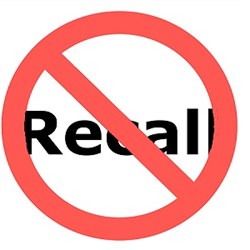6 Ways To Avoid Allergen Recalls
By Laurel Maloy, contributing writer, Food Online

Establishing and implementing allergen-control protocols is critical in preventing costly, headline-making incidents
The President of The American Institute of Baking (AIB International-Certification Services), Stephanie Lopez, recently collaborated with TraceGains to produce an E-book on allergen control. If you’ve been watching the news, recalls as the result of undeclared allergens are a common occurrence; one that has the potential to be particularly deadly. In fact, in 2013, allergen contamination was the number one reason for recalls. Just in the last month, there have been five allergen recalls, two of which involved undeclared peanuts from one of the largest candy manufacturers in North America. Recalls as the result of undeclared allergens are considered one of the most dangerous. Ingestion of an allergen by a sensitive individual can result in severe health consequences, hospitalization, and sometimes death.
The AIB and TraceGains collaboration E-book, Top 6 Best Practices for Your Allergen Control Program, is free to download. Below is a brief summary of what the book has to offer:
- Confirm And Verify Labeling — Both at the beginning and ending of the roll. Lopez explains that label manufacturers often splice multiple rolls together, creating the opportunity for mixed labeling in one roll. Never assume the label manufacturer has done its due diligence. Verify that fact with your own in-house verification system.
- Validate Allergen Cleaning for Each Allergen/Surface Type — What works to clean one surface may not work to clean another; the same holds true for the type of allergen. Validation requires either swabbing and testing a previously cleaned surface or taking a sample of the very-first product through the line immediately after allergen cleaning is completed. Swabbing the most difficult to clean harborage surfaces, such as hinges or bearings, will help to ensure an allergen-free run.
- Confirm Ingredient Statements — Lopez suggests creating a printed transparency in order to confirm ingredients for both finished products and for raw materials upon receipt. The idea here is that you simply lay the printed film over the label’s ingredient statement in order to verify accuracy. If the words in the ingredient statement do not line up, then perform a word-for-word review. You can, of course, require the supplier, by contract, to inform you in the event of an ingredient change; however, it is ultimately your responsibility to ensure the accuracy of the ingredient list.
- Dispose Of Old Formulation Labels Or Packaging — Or otherwise render them unusable. Lopez suggests drilling a hole, measuring at least one-half inch in diameter, directly through the roll of labels or packaging if they are held for recycling and not immediately disposed of.
- Prevent Cross-Contact Contamination — This is different from cross contamination in that the product may not have to come in direct contact with another in order to become adulterated. Many allergens are in powder form and can be carried on air currents, coming to land on product or surfaces the product or processing personnel may come in contact with. A visual inspection will most likely be inadequate as allergens are measured in parts per million (ppm) and may not be visible with the naked eye. Either arrange for in-house or laboratory testing to ensure adequate separation from the source of the allergen dust or powder.
- Simplify Allergen Identification on Palletized Ingredients — If not shipped in bulk, multiple allergens are often identified with stickers on the bottom of the pallet(s). Color-coding or simply listing the ingredients by name are common, but Lopez suggests using a number system. Each number will correspond to a certain allergen, which can be posted throughout the facility. This is the most-likely system by which to avoid errors. All employees, even those who are color blind or non-English speaking, will be able to easily grasp this system.
The most common allergen recall is normally the result of a labeling issue. The wrong label is put on the wrong product, the outer package does not match the inner, or the allergen was not identified on the label. These 6 practices will help to ensure your name is not splashed across the headlines for an inadvertent error; an error that could have easily been prevented.
Hospital admissions around the world for foodborne allergies are on the rise. According to the Centers for Disease Control and Prevention (CDC), there has been a 50 percent increase in allergies in children spanning the 14 year period from 1997 to 2011. Allergen control is reaching critical limits and because of this, Good Manufacturing Practices (GMPs) are being revised and updated with the implementation of FSMA.
